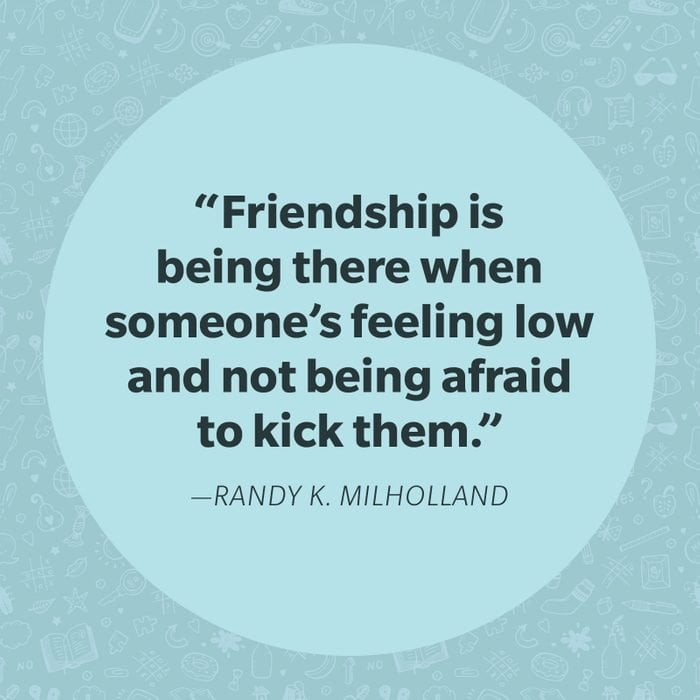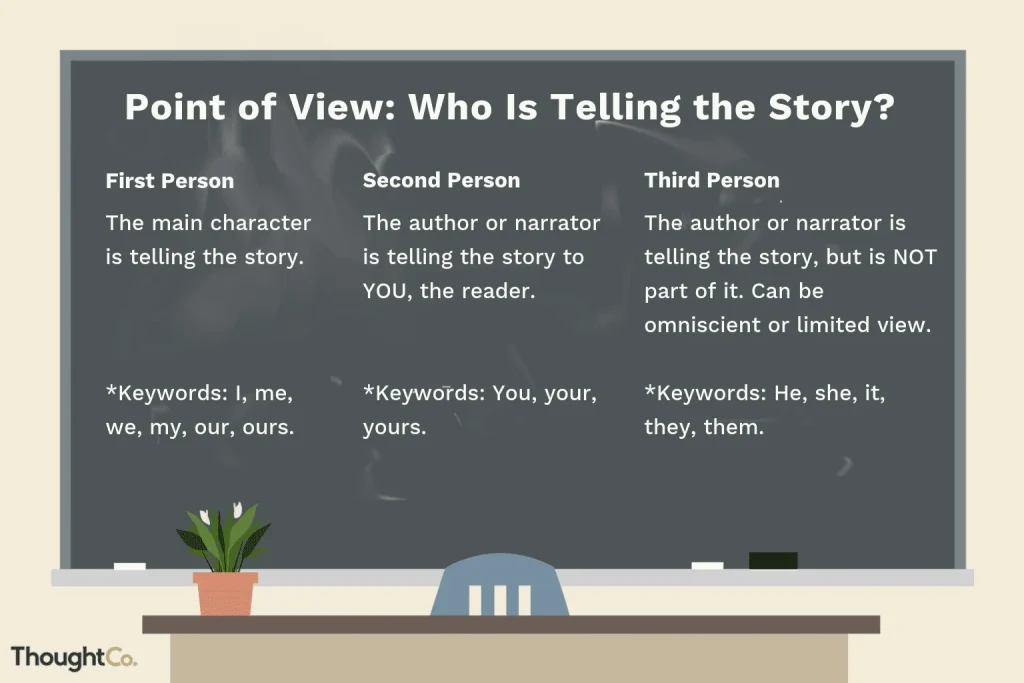What makes a Good Story? What are the steps you’ll take to get that end product? You want to create your best work possible, whether you are writing a book, screenplay, personal essay, scripting for video or any other creative project. You need to master The art of Storytelling first.
- What is Storytelling?
- Importance of Storytelling
- What makes an excellent story?
- Types of Storytelling
- The Art Of Storytelling
- 8 Storytelling Techniques You Must Know
- Different props for storytelling
- Benefits of props for storytelling
- Famous Storytellers
- Walt Disney.
- Stephen king.
- Roald Dahl.
- William Shakespeare.
- Rabindranath Tagore.
What is Storytelling?
The practice of blending truth and fiction to explain something to your audience is known as Storytelling. Some tales are true, while others are inflated or made up to better express the central point.
Storytelling is an ancient art form that may be found in every country and community. Why? Because tales are a universal language that everybody can use, regardless of accent, birthplace, or origin. Stories elicit creativity, passion, and a feeling of community in both listeners and tellers.
Telling a tale is similar to painting with words. While anybody can tell a story, some individuals brush up their Storytelling abilities and become professional storytellers] for their company, brand, or organization. The people are marketers, content writers, or public relations experts.

Importance of Storytelling
People come together around stories.
As we mentioned above, tales serve as a type of universal language. We have all heard a hero’s story., an underdog’s story, or a heartbreak story. We all have sensations of pleasure, optimism, despair, and fury, and we may share these with others. Even the most, unlike individuals, may feel a feeling of belonging and community when they share a story.
Stories draw people’s attention and create a feeling of community in a world separated by many factors. Stories unite us regardless of our language, religion, political opinions, or ethnicity because of how we feel and react to them. We become human via stories.
Inspiration and motivation come from stories.
Everyone likes stories same with a brand. When businesses become more transparent and honest, they become more approachable to customers, allowing them to connect with them and the people who work for them.
Making a story out of your brand or product not only humanizes it but also promotes it.
These days, Storytelling has become an element of advertising, with firms attempting to communicate a message via advertising by telling a tale. For example – in Bournvita, you may witness a tale of a mother assisting her kid in becoming a successful athlete, as well as many more instances.
Become a professional Content Writer from the comfort of your home.
Sign up for Podium Pro and get a chance to create awesome content for top global brands!
What makes an excellent story?
Words like “good” and “bad” are subjective to the user’s perspective. There are, however, a few non-negotiable elements that contribute to a fantastic Storytelling experience for both the reader and the teller.
The characteristics of Good Story are.
- Good friendly stories keep the reader engaged and curious about what will happen next.
- Good stories pique the reader’s interest and add to their knowledge store.
- Great stories are universal in that they appeal to all readers and touch on emotions and experiences that most people share.

Few more characteristics of Good Story
- Organized: Good tales have a clear structure that helps deliver the main point and absorb it by the audience.
- Memorable: Great stories leaves an impression on the reader, whether via inspiration, controversy, or comedy.
According to Podium, three components make up an intense story- regardless of the story, you’re attempting to convey.
Characters- Every tale has at least one protagonist, and this protagonist will be crucial in bringing your audience back to the plot. This element serves as a connection between you, the storyteller, and the audience. Your audience will be more inclined to act on your call to action if they can put themselves in your character’s shoes.
Conflict- The lesson of how the character overcomes a difficulty is a conflict. Conflict in your tale stimulates emotions and brings the audience closer together via shared experiences. What you’re saying and educating by sharing tales has a lot of power. Your tale isn’t likely to be a story if there isn’t any tension in it.
Resolution- A good tale must have a conclusion, but it does not necessarily have to be an excellent conclusion. The conclusion of your tale should tie up the plot, offer context for the characters and conflict(s), and create a call to action for your audience.
Types of Storytelling
Descriptive Storytelling
The descriptive style of storytelling is where the storyteller goes on and on about the details. The storyteller tries to paint an image in your mind, they focus more on your imagination and thought process.
The deep use of imagery along with a balance of details as a storyteller tries to convey their message.
Interactive Storytelling
In an interactive style of storytelling, the storyteller captures your attention in the story by making the audiences answer the question. The storyteller lets the audience make assumptions, as well as lets the audiences make and ask questions. Schools, colleges, and even the TED Talks’ speakers use this form of storytelling.
The motive of the interactive style of storytelling is to make the audiences feel as if they are a part of the story itself, as an actual character for instance.
Satirical Storytelling
In a satirical style of storytelling, a storyteller makes a lot of outlandish claims but with enough finesse. Enough finesse that it somehow sounds true in most of the cases. The main purpose of the satirical style of storytelling is to make the audiences or listeners laugh during the storytelling.
The satirical style of storytelling is somewhat still different from the general hilarious storytellers, who bring comedy to the story with the use of punch lines, sarcasm, and so on. So that is another style of storytelling.
Comedic Storytelling
In a comedic style of storytelling, a storyteller uses punch lines, sarcasm, and jokes about current affairs as stated above. The main purpose of this style of storytelling is the same as the satirical style of storytelling that is to make the audiences laugh. However, the method and ideology are a bit different. That is the core reason why satirical style and comedic style of storytelling as two different separate entities in the world of storytelling.
Comedic style storytellers are stand up comedians for example, where they have a script with punch lines. Punch lines regarding the topic of the stand up that particular day. It is basically a form to convey your message in a comedic way.
Digital Storytelling
The digital style of storytelling comparatively is still a new concept, although, it is growing at an extraordinary rate. Digital style of storytelling basically means conveying your story through using digital media. Digital media such as motion videos, audio, pictures, are the major parts of the digital style of storytelling.
This style of storytelling is emotionally compelling and pleasant to watch and hear. Films, songs, paintings are the best examples of the digital style of storytelling. This form of storytelling makes the most impact and influence on the audiences as per the surveys and studies.
Therapeutic Storytelling
Therapeutic storytelling or healing storytelling is a form of storytelling that uses creative metaphors to tell individuals stories that help address challenging experiences in children and adults. This form is utilized by both professional therapists and non-professionals, parents, and teachers.
This approach of storytelling has been pioneered by storytelling therapists like George Burns, Susan Perrow. However, Proponents of therapeutic storytelling claim that the style of storytelling is a subtle yet often effective means of addressing traumatic situations and challenges in behaviours with children, teenagers, and adults. This form helps the people to work on themselves through introspection, and proper knowledge about themselves.
Also, Proponents claim that therapeutic storytelling has the potential to shift an out of balance behaviour. Lastly, Many therapeutic stories caters to specific individual needs. The therapeutic storytelling approach is one of the most crucial gifts to society.
The Art Of Storytelling
What is the significance of this procedure? Because, as a company or a brand, you probably have a lot of information, data, and messages to convey in a single tale. What do you do if you don’t know where to start? So, let’s begin with the first step. After that, you’ll know where to go (and how to get there).

Be aware of your target audience.
Ask yourself why people will listen your story. Who will profit the most and react the most forcefully? You must first understand your audience and who will react and take action in order to write an engaging tale.
Do some research on your target market and create your consumer persona before you put pen to paper (or cursor to word processor) (s). This step will introduce you to the people who could be reading, watching, or listening to your tale. It will also provide you with essential guidance for the following few phases as you lay the groundwork for your tale.
Define your main point.
Your tale must have a central point, whether it of one page or twenty, 10 minutes or sixty minutes long, like the foundation of a structure, must be established before proceeding.
Is your tale about a product or a fundraiser? Explain a service or make a case for a cause? What exactly is the goal of your tale? Try to explain your tale in six to ten sentences to help you define this. You don’t have a core message if you can’t accomplish that.
Decide on the kind of tale you’re going to tell.
Not every story is made equal. Define how you want your audience to feel or respond as they read to determine the kind of tale you’re presenting.
This will aid you in deciding how you’ll weave your tale and what goal you’re seeking. If you want to achieve…
Your story should demonstrate how a successful action was carried out in the past and how readers may achieve the exact change. Excessive detail or subject switches should be avoided in order for your audience to focus on the action or change that your story supports.
Tell a tale about yourself that includes true, humanizing difficulties, failures, and victories. Today’s customer values and interacts with businesses that are honest in their marketing, and Storytelling is no exception.
Tell a tale that uses recognizable emotions, people, and events to help readers grasp how the story relates to their own lives. This is particularly true when talking about ideas that some people may not agree with or comprehend.
Encourage readers to discuss and share your tale with others by telling a narrative that inspires them to do so. Say, “Me, too!” to a circumstance or event that others can connect to. To appeal to a broad range of readers, keep events and characters neutral.
Tell a tale that includes a trial-and-error process so that readers may learn about an issue and how a solution was identified and implemented. Other options should be discussed as well.
Decide on a call-to-action.
Although your aim and call-to-action (CTA) are similar, your CTA will specify the action you want your audience to do once they’ve finished reading.
What do you want your readers to do when they’ve finished reading? Do you want them to make a monetary donation, sign up for a newsletter, enroll in a course, or purchase a product? Make a list of this along with your goal to make sure everything is in order.
If your goal is to create community or cooperation, for example, your CTA can be “Tap the share button below.”
Decide on a medium for your tale.
Stories come in a variety of shapes and sizes. Some tales for reading, while others are viewed and listen. Your choice of narrative medium is determined by the sort of tale you’re telling as well as your available resources, such as time and money.
Here are some options for telling your tale.
Articles, blog posts, and novels are used to tell a written tale—these large texts with a few photos thrown in for good measure. Written tales are by far the most cost-effective and accessible form of Storytelling since all you need is a free word processor like Google Docs… or a pen and paper.
A spoken tale, like a presentation, pitch, or panel, is presented in person. TED speeches are sometimes referred to as “spoken Storytelling.” Because spoken tales are “live” and unedited, they demand more significant experience and the ability to transmit messages and provoke emotions in others.
The difference between an audio tale and a spoken narrative is that an audio story is said aloud but recorded. Podcasts are the most common format for audio tales, and with today’s technology, generating an audio narrative is more inexpensive than ever. (Check out The Growth Show for a beautiful story-driven podcast!)
A digital narrative may be conveyed in several ways, including video, animation, interactive Storytelling, and even video games. This method is the most successful for emotionally resonant and dynamic visual narrative… yet it is also the most costly. However, do not worry: the video quality is not as important as communicating a powerful message.
Build trust
If your stories are humble and write about personal experiences, not only will it motivate the audience to take action, but it will also allow the audience to trust you. Trust is the core principle for any new affinities to take place.
Be inclusive
The more viewpoints you include in your narrative, the better chance you’ll have of educating your audience. Impactful stories strive to make the unseen visible and value the marginalized. Your stories should normalize diversity while fostering mutual understanding and moving forward with respect and appreciation.
Tell us about yourself.
Remember to tell your story and market it! The creation of material, like any other, is just half the fight; the other half is distributing it.
8 Storytelling Techniques You Must Know
Now that we know what and how storytelling has been thriving amongst us, it is time to learn about some major storytelling techniques.
Here are 8 important storytelling techniques by Podium School that you should know and learn too.
Mountain Storytelling Technique
Just as the name suggests, the mountain pattern of storytelling involves providing tensions and drama in chunks. It is to build up the listeners’ interest with every chapter or plot of the stories. It is also about describing small obstacles and rescues in every chapter of the story. A mountain pattern of the story does not necessarily have a happy ending, instead, it might be a cliffhanger too. For instance, the famous series The Vampire Diaries has a mountain pattern of telling the entire plot, with each episode having chunks of drama, tension, and action.
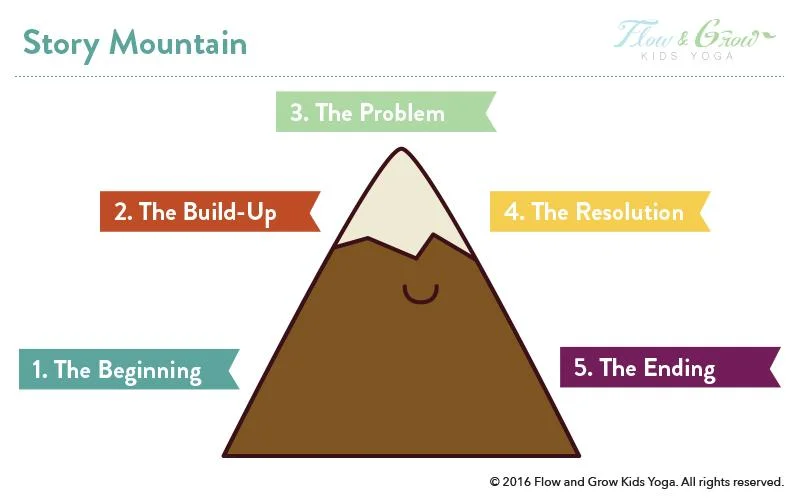
Monomyth Pattern
Ever came across a warrior’s journey or a heroic tale? The monomyth is the pattern of storytelling that is born out of myths, beliefs, folk stories, and religious preaching. This storytelling technique is also known as the hero’s journey. The use of this storytelling technique is still prevalent in books as well as movies. For instance, the book The Hero with a Thousand Faces, or the movie Lion King, has a central warrior and description of their journey.
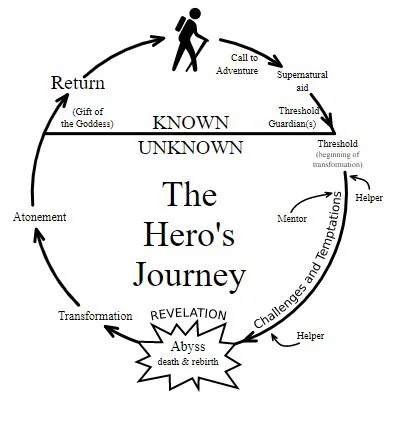
The Nested Loops
Are you fond of diving into loops and turns? The nested loop pattern is narration consisting of layers of narratives. In this pattern of storytelling, you will have to devise your central plot and place it in the center, and then you elaborate it with stories revolving around the central plot. The loops of the stories get tangled with the main loop. For instance, while narrating about computers, the narrator might shift to speak on technology and components of computers.

In Medias Res
This storytelling technique is only apt for a short period. In this pattern of storytelling, you start by narrating something strange to grab the listeners’ attention. However, while saying the strange part, you must ensure that you do not elaborate it on too much, else your audience will stir obviousness rather than curiosity. For instance, if you start with the line “Can potatoes grow out from the sky?” Such lines will grab attention and make the audience crave more.

Sparklines Storytelling Technique
This storytelling pattern is the most realistic one. In this storytelling style, you act both as the narrator and motivator. You narrate what could be rather than what it is. This storytelling style also involves an evocative tone, to inspire people and connect the narration to their emotions. It is the switch on to hope and switch off from reality. For instance, environmentalists may use this technique to influence the people in conniving nature and make it the best place to live.

False Start
Ever listened to a story that has a different beginning and ends? If yes, then you should not wait and recognize it as a false start technique. This pattern so narrating the story is starting on a different but predictably note, but concludes it entirely unusual. In simple words, you tell something and the audience might already predict the end, however, in the end, they are left flabbergasted by how the plot concludes. For instance, you speak about the galaxies and stars, which might indicate a story in space. However, in the end, you conclude by relating it to diverse human behavior.

Converging Ideas
This pattern of storytelling involves traffic of varied thinking leading to the culmination of a single idea. In this style, you narrate the various thoughts and beliefs which eventually come together to give rise to a single idea. For instance, a particular story may have been born out after several minds agreed on a particular theme such as social pressure, cultural influence, or technological advancement.

Petal Formation
Just like how flowers have several petals, this pattern of storytelling is about several stories around a single concept. It is different from nested loops, which are predominantly the stories forming loops across the main story.
Petal storytelling structure has a main theme and all the stories narrated are in connection to it. For instance, there can be several narrations (petals) around the theme of Racism and Hostility.

Different props for storytelling
Props are objects or properties of the play or drama. So, if you find it hard to engage your kid while narrating a story, using props for storytelling can help you in that. You can make it fun and interactive by using different props for storytelling.
Here are different props for storytelling you can use along with their how-to –
Finger Puppet
The easiest way to bring the characters alive is by simply drawing the faces of animals and other characters on paper and placing it on the fingers. Being at your fingertip, it’s closer to see and grasp, and of course, these finger puppets are adorable to watch.
Moreover, you can make the fingers dance and enthrall the kids. You can make an elephant of paper and use the finger as a trunk, or you can also use the finger as legs or hands of the character.
Stick Puppet

You can make a stick puppet as a prop for storytelling. All you need is to draw and paint the theme character on paper and paste it to a stick to support it. Now you can sway it around or raise it above to make it visible for everyone in the room.
You can reuse the ice cream stick spoon stick in this case. Instead of throwing away these resources, you can reuse them as a prop for storytelling.
Table Top
Use the top of the table to create the scene of the story. You can use a green cover at the table as the green field and place the animals above it. The table gives enough space to create different scenery of the story and enough space to be creative with your skill. You can make it a big forest, bring all the animals in one place, and recite the story.
Cotton Cottage or Cotton Cave
Cotton can be used to make a cottage where the main character lives. It’ll look beautiful.
If you are narrating some fairytale story or story of some prince and princess, the cotton cottage will suit the theme. You can also make a cave for a lion if you are narrating some forest stories. Support the cotton with a cupboard or some plastic cutlet while making the cottage or cave.
Stuff animals as props for storytellings
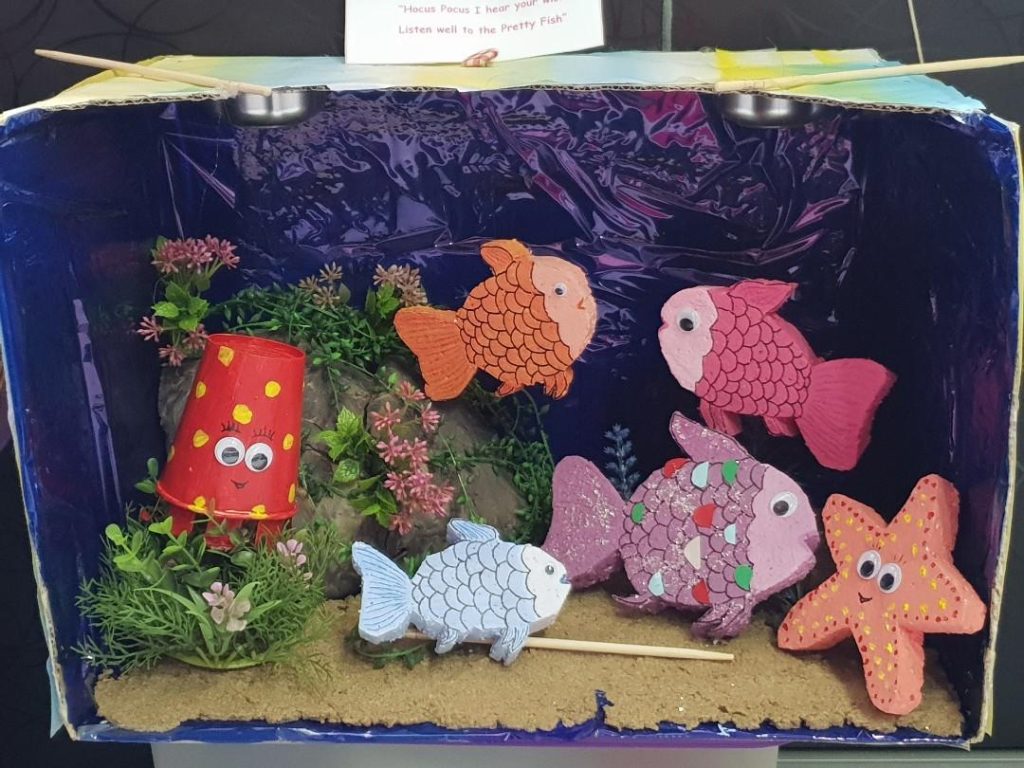
You can DIY clothes into making them stuffed animals. Just fill the towel or some other clothes and make it into the shape of any animal. You can also use your kid’s old stuff toys in the storytelling. Many animals are already available in the market, ready-made. So, you can use them to share the story to make it fun and relatable. Kids also enjoy if you play with their toys, they get a companion to share.
Realistic thing
You can use real things as a part of the story. Twig with leaves to represent trees or branches, flowers to show the garden in a story, pebbles or stones to show the mountains. Furthermore, water can be used for the sea, ocean, or any other water body. You can also use an aquarium to show fishes and tell stories of underwater life.
Colored fabrics as props for storytelling
Colorful fabrics will make a lot of things easier. Green Fabric represents grass or playground. It can be laid on the table or base of any setup to give it a background. White fabric can be used to show the winter season. The sky can be represented by blue fabric. You can also drape the setup before the show to create mystery among the kids and reveal it by lifting the fabric.
Head Gear
Head Gear can be made by cutting out paper in the shape of an ear, horn, antennas, and other things that could be worn at the head. That’s how a specific being is recognized. You can let kids wear it too to let them represent different animals and be part of the story. Moreover, you can paint the face for color and make it more and entertaining.
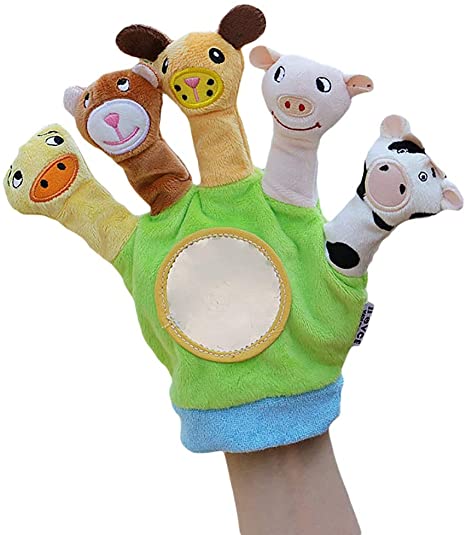
Wet Mud
Wet mud can be put in a tray or kept in a pot to the showground. You can use the wet mud to stick objects into it to keep it fixed, or you can put the puppet stick in for better support. Furthermore, you can place flowers and trees on the wet mud to give it a view of muddy ground, or you can also choose your location as the muddy ground for storytelling.
Telling the story in your natural place, immediately connects to the environment and feels adventurous.
Benefits of props for storytelling
- It engages the kids by luring them of its color and texture.
- Enhances the learning capacity of kids and introduces them to literature.
- It improves the critical thinking of children along with listening and speaking skills.
- Children are focused and attentive in the story.
- It improves their imagination power by providing them with visuals.
- The happiness and excitement it brings to children’s faces are worth it.
- It broadens their mind and introduces them to our culture.
- Fosters social skills by showing all possible sides of society and the world.
- It sows seeds of empathy towards every living being.
- Encourages them to read books; thereby, improving their language and tonality.
- It makes the relationship between the listener and the narrator stronger.
- Their inquisitive mind will grow to be more fruitful.
- It improves memory power and makes them confident.
- It helps them learn moral values through the lessons taught in the story.
We have listed below for you the top 5 storytellers who have a fanbase all over the world. These storytellers are being followed by hundreds of people round the globe. Each and every one of them have their own style of storytelling. They keep their audience engaged with their uniqueness.
Famous Storytellers
Walt Disney.

Walt Disney is an american entrepreneur, animator,voice actor,film producer and the president of “The Walt Disney company”. Walt Disney was born on December 5, 1901
Chicago,Illinois , U.S. and died on December 15, 1966 (aged 65) Burbank California, U.S.
Walt Disney generated an early interest in drawing. Disney took art classes when he was boy and got a job as a commercial illustrator when he was just 18. He was a very shy, self-deprecating and insecure man in private. However, he had a warm and outgoing public persona. He had high standards and without a doubt, high expectations of those with whom he worked.
Walt Disney was, first and foremost, a storyteller, and his stories were peppered with hopeful moments. Disney, as a storyteller has the ability to create simple, emotional stories that break down barriers; whether that’s age group, nationality or anything else in between. That’s the talent of a storyteller. The art of storytelling is successfull in its execution only when it is capable of gaining the attention of all those present.
His few masterpieces are “Snow White and the Seven Dwarfs”, “The Princess and the Frog “,”Cinderella” ,”Mickey and the Beanstalk.”
Disney famously said – “That’s what we storytellers do. We restore order with imagination. We instill hope again and again and again.”
Stephen king.

Stephen king is known as the master of horror and also he is a masterful storyteller too.
Stephen king was born on 21 September 1947 in Portland, Maine, United States. He is currently 74 years old. He is also called “King of thrills and chills” because of his wonderful way of presenting horror stories. Stephen king’s way of storytelling is jaw dropping and keeps the reader or listener stuck to its place.
Stephen King has authored almost some dozens of books since the early 1970s. Most of his tales revolve around horror, fantasy and the macabre. His few very well written stories are “It”,”The Stand”,”The Shining”, “Billy Summers.”
One amongst many of his popular quotes is “If you want to be a writer, you must do two things above all others: read a lot and write a lot.”
Roald Dahl.

Roald Dahl was a British novelist, short-story writer, poet, screenwriter, and wartime fighter pilot. He was born on 13 September 1916 in Llandaff, Cardiff, United Kingdom and died on 23 November 1990 in Oxford, United kingdom.
Roald Dahl wrote many stories and was a great storyteller. Dahl’s books were pretty much famous amongst readers. The kids and adults alike loved Roald Dahl’s masterpieces. He received several awards for his wonderful work.
Some of Roald Dahl’s great stories are “Matilda”, “The BFG”, “The Witches”, “James and the Giant Peach.”
One of his great sayings are “Try to be optimistic even when things look hopeless.”
William Shakespeare.
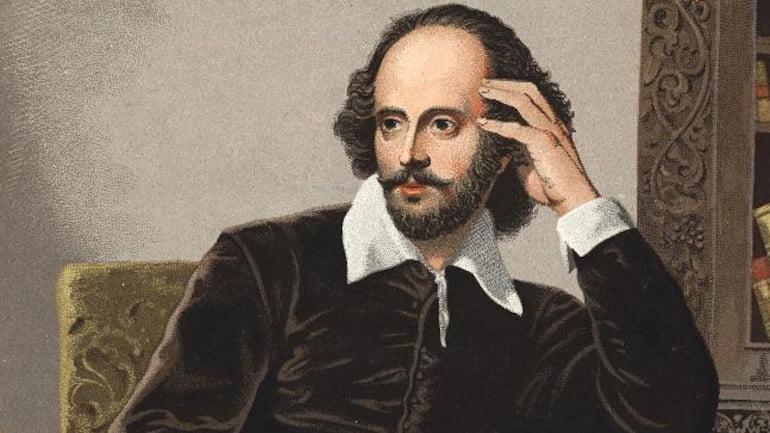
William Shakespeare is the gem amongst the storytellers. His stories are adored by everyone you can recall at the moment. He is undoubtedly the greatest storyteller of all times.
William Shakespeare was an English playwright, poet, and actor. He was born on April 1564 in Stratford-upon-Avon United kingdom and died on 23 April 1616 in Stratford-upon-Avon United kingdom.
William Shakespeare was regarded as the greatest writer in the English language and the world’s greatest dramatist too. Shakespeare is often called England’s national poet and the “Bard of Avon”. Few of his masterpieces are “The tempest”, “Macbeth”,” Romeo and Juliet”,”Twelfth Night.”
William Shakespear’s wise saying is that “Be not afraid of greatness. Some are born great, some achieve greatness, and others have greatness thrust upon them.”
Rabindranath Tagore.
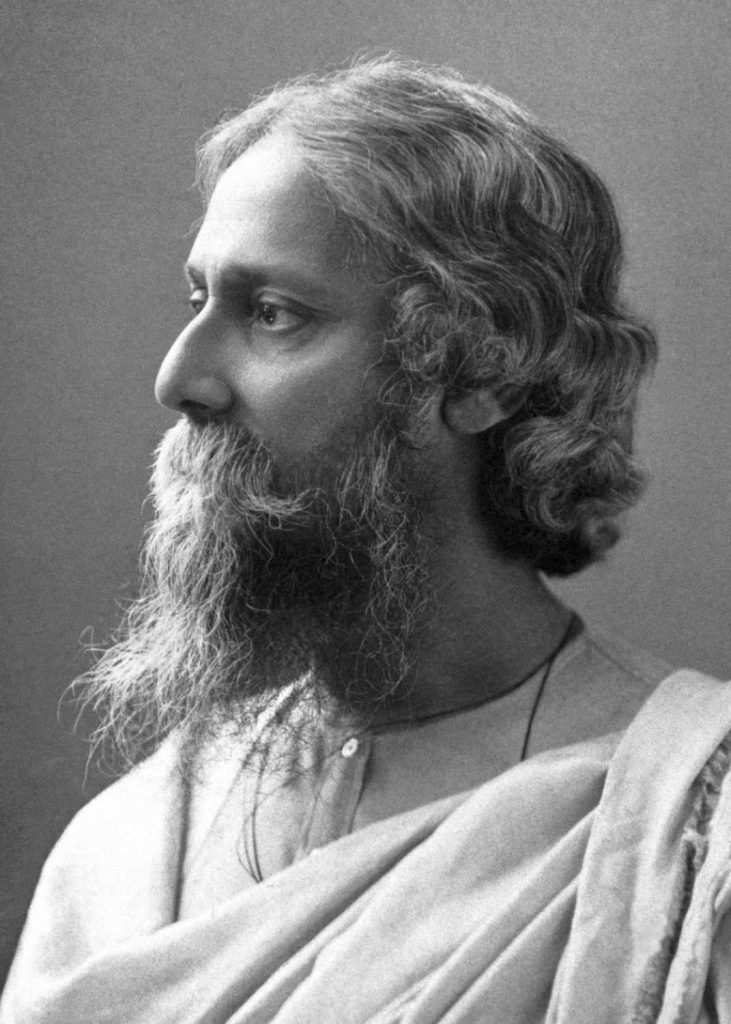
Rabindranath tagore was a Indian polymath – poet, writer, playwright, composer, philosopher, social reformer and painter.
Rabindranath Tagore was born on 7 May 1861 in kolkata and he died on 7 August 1941 in jorasanko Thakurbari Kolkata.
Few of Tagore’s amazing stories are “Kabuliwala”, “The postmaster”, “The Broken Nest”, “Jibita o Mrita”, The conclusion. Rabindranath Tagore was a philosopher and educationist. Tagore was a painter too and he played a crucial role in modernising Bengali art.
Rabindranath Tagore’s famous quote is “If you cry because the sun has gone out of your life, your tears will prevent you from seeing the stars.”
Share with your friends



